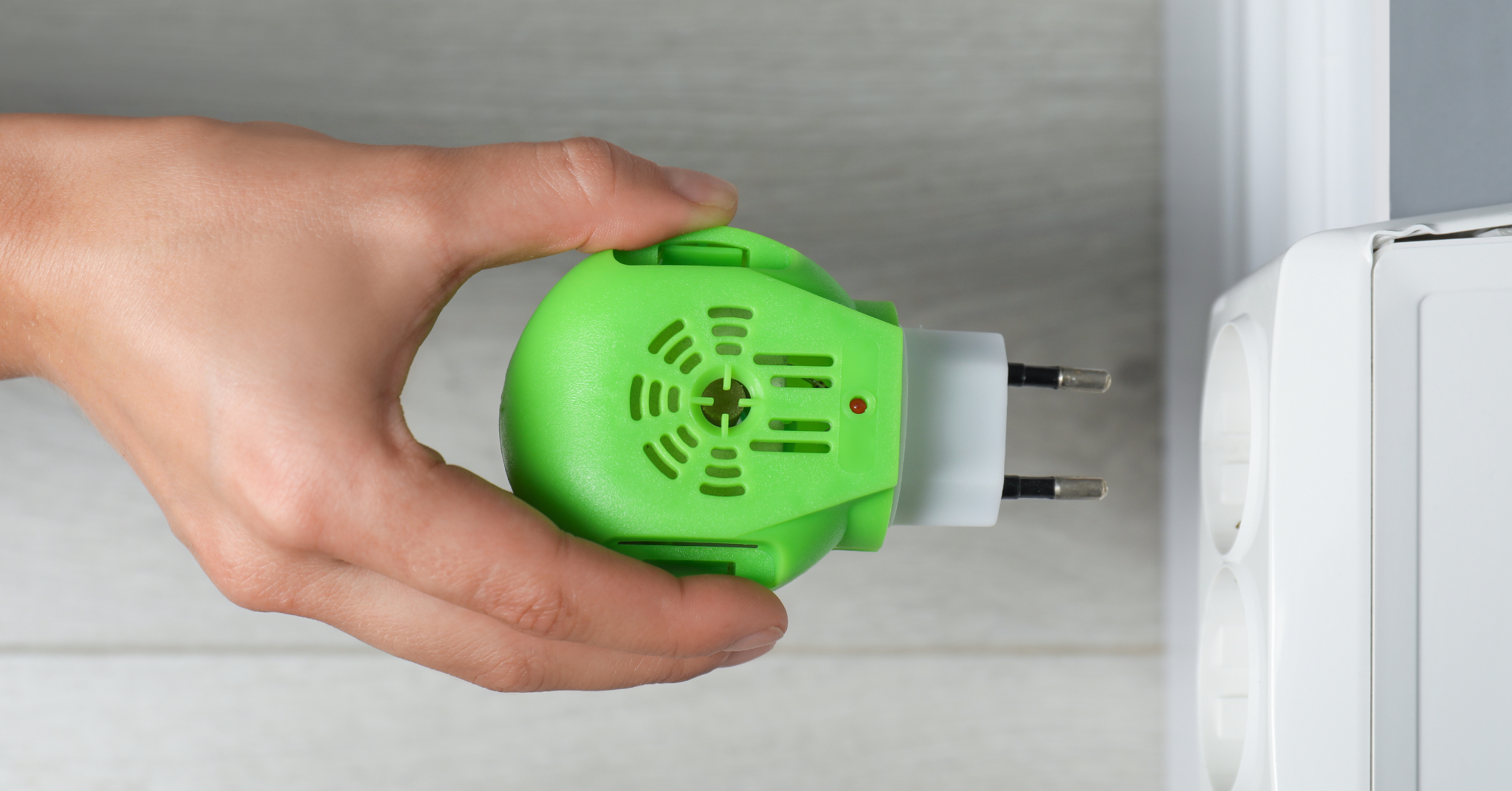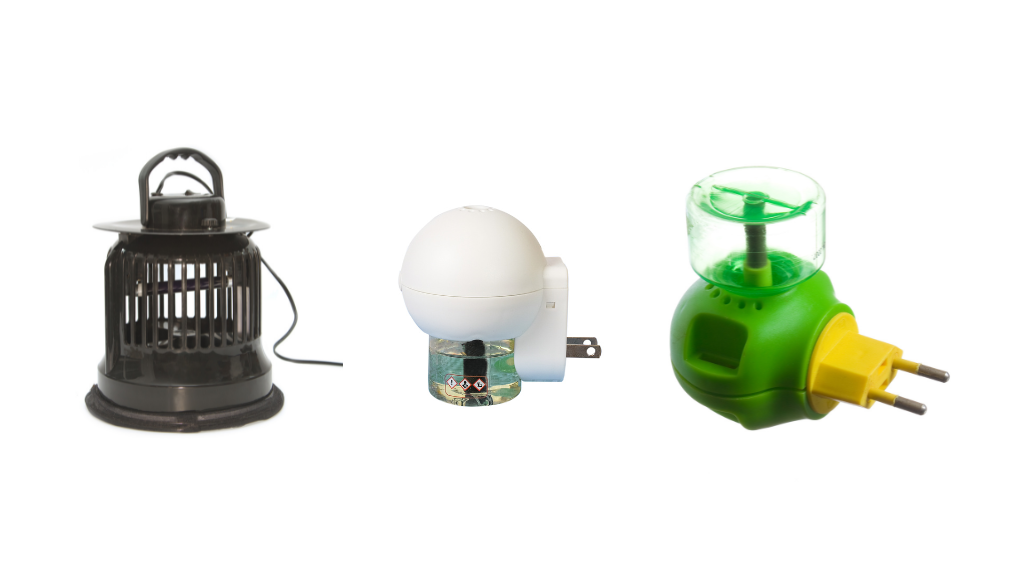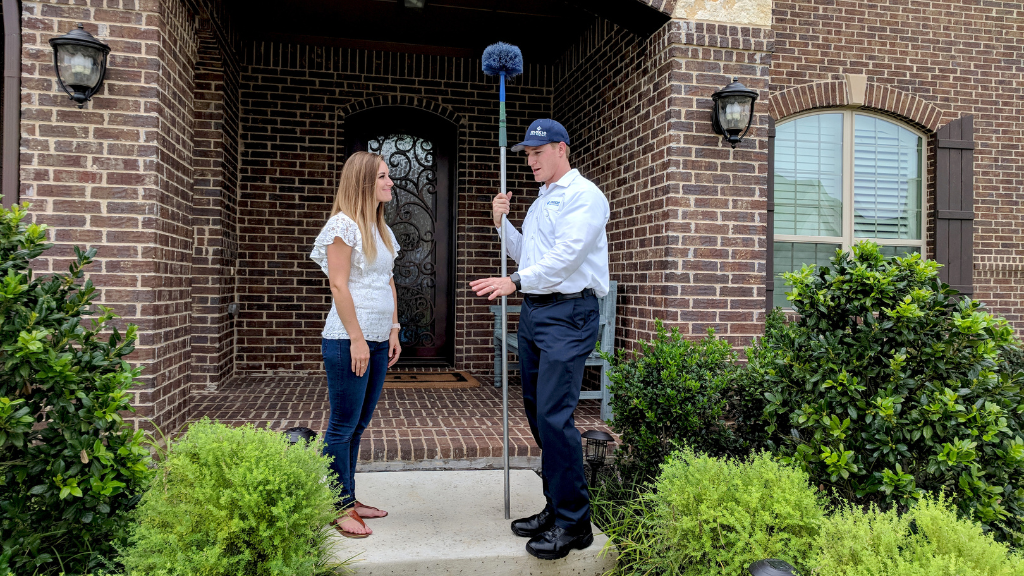Do Ultrasonic Pest Repellers Work?

If you’re dealing with pests, you may be desperate for relief. For a lot of people, ultrasonic pest repellers seem like a fast, easy solution for driving bugs and rodents away, but do ultrasonic pest repellers work? Are they even worth trying?
While these devices might discourage certain pests temporarily, ultrasonic pest repellers are not effective in the long term and ultimately won’t solve chronic pest problems.

WHAT ARE ULTRASONIC PEST REPELLERS?
An ultrasonic pest repeller is a small plug-in device that emits a high-frequency tone meant to drive pests away from your home. These products are available online and at most hardware stores and have been marketed to consumers for decades as a pest solution.
Another popular variation of these devices is outdoor ultrasonic pest repellers. Lawn and garden ultrasonic pest repellers are attached to a stake for easy placement in your yard and are usually solar powered. Outdoor pest-repellent devices are meant to ward off pests like moles, voles, mosquitoes, and other animals and insects.

HOW DO ULTRASONIC PEST REPELLERS WORK?
Ultrasonic pest repellers emit frequencies above the threshold for human hearing (above 20 kHz) in an attempt to scare off pests without bothering your ears. Imagine walking into a home and hearing a loud, high-pitched tone playing incessantly—you’d probably walk right back out. This is the theory behind ultrasonic pest repellers. Pests avoid the area where the high-pitched noise is coming from. Some commercial devices play frequencies above 65 kHz; the measurement of sound waves varies depending on the manufacturer.
In a few controlled studies, high-frequency sound waves from sophisticated equipment raised body temperature over time and caused seizures in rodents. But these results have not been replicated with small commercial devices in residential settings.
DO ULTRASONIC PEST REPELLERS WORK?
Are ultrasonic pest repellers effective? Not really; at most, they’ll disturb pests temporarily. The idea is that pests will hear an annoying sound in your home and decide not to stick around. However, many pests like rodents and cockroaches are extremely adaptable to their surroundings and won’t stay away for long (or at all).
Jonathan Ferreira, ACE (Associate Certified Entomologist) at Moxie Pest Control explains, “Rodents are the number one reason people buy ultrasonic pest repellers, and rats are especially smart.”
“If someone is using one of these devices, pests might go away for a week or two, but they’ll keep coming back. And if the sound is always there, they’ll get used to it.”
In fact, it’s not difficult to find images and videos of rodents and other pests interacting with ultrasonic pest repellers, totally unbothered.
Another reason ultrasonic pest repellers are not effective is that ultrasonic sound waves can’t penetrate walls or solid objects.
Ferreira said that people will often buy two devices—one for the kitchen and one for the bedroom—and think they’re covered. In reality, you would need to buy one repeller for every room in the house because ultrasonic sound doesn’t travel the way other frequencies do.
He also sees people “hide” ultrasonic pest repellers behind furniture so that guests don’t know they have a pest problem. Unfortunately, this defeats the purpose of the device, as those sound waves are now trapped behind a solid object.
Even with proper placement inside the home, ultrasonic pest repellers have no effect on pests living outside. “You might see an improvement in your home temporarily, but these pests are still reproducing outside,” said Ferreira.
As for lawn and garden ultrasonic pest repellers, the same principles apply:
- They’re not proven to be effective.
- Solid objects will get in the way of sound waves.
- Pests will continue to come back and get used to the sounds in the environment.
Often, people convince themselves that ultrasonic pest repellers work when they see an improvement in a pest problem. There are cases where someone with one or two mice uses a device and the animals do go away. However, there’s no way to prove these pests weren’t eliminated through other environmental factors like a natural predator or a neighbor setting traps.
Studies have shown time and time again that there is no strong evidence to suggest that ultrasonic pest repellers are effective.

CAN MY PETS HEAR AN ULTRASONIC PEST REPELLER?
There is a chance an ultrasonic pest repeller could disturb your pets because their ears are much more sensitive than ours. Dogs can hear pitches all the way up to the 47–65 kHz range and domestic cats can hear up to 85 kHz. If your animals begin to act anxious or display unusual behavior after being exposed to an ultrasonic pest repeller, they may be picking up on the frequency and feel a bit disoriented by it before getting used to the sound.
SHOULD I USE AN ULTRASONIC PEST REPELLER IN MY HOME?
Ultimately, ultrasonic pest repellers are probably not worth your time or money. Most bugs and rodents will adapt to these sounds and will not be deterred by them.
In fact, between 1985–1997, the Federal Trade Commission (FTCC) filed charges against ultrasonic pest repeller manufacturers for making false claims about the efficacy of their products.
Again in 2001, the FTC sent warning letters to more than 60 ultrasonic pest manufacturers, stating that the companies were required to back up their claims with scientific research and evidence.
Class action lawsuits and warnings continue to be filed against these companies today, including a multi-million dollar suit that began in 2015 against Bell & Howell. The plaintiff in this case provided photo evidence of rodents resting on ultrasonic pest-repeller plug-ins, arguing the devices had no effect in deterring pests. The judge ordered Bell & Howell to reimburse consumers, and as of 2020, they had paid nearly $4 million as a result of their false advertising.

EFFECTIVE METHODS FOR ELIMINATING PESTS
If you’re looking for effective ways to get rid of rodents and other pests in and around your home, professional pest control is the best way to ensure their removal. While you’re waiting for experts to arrive, there are a few things you can do to prep your home and yard.
- Clear your surroundings (both indoor and outdoor) of any harborage areas like cardboard piles, discarded patio furniture, yard waste, dryer lint, and other debris.
- Clean up food waste and check every room in the house for dirty dishes that may have been forgotten. Give hard floors a thorough sweeping and mopping, and vacuum carpeted areas.
- Maintain your yard by trimming trees and shrubs, mowing grass, and taking care of weeds.
- Seal off accidental entry points pests can use to get inside. Look for cracks in wood, torn weather stripping, and small holes.
Ultrasonic pest-repelling devices may not be able to eliminate your pest problems, but the friendly field experts at Moxie Pest Control can. We use professional-grade products to ensure the removal of pests, so whether you’re dealing with rodents or spiders, or simply want to prevent unwanted bugs and critters from entering your home, contact us today.
SOURCES
- https://study.com/academy/lesson/ultrasonic-wave-properties-uses-examples.html
- https://www.forbes.com/home-improvement/pest-control/do-ultrasonic-pest-repellers-work/
- https://www.mcgill.ca/oss/article/technology-you-asked/are-ultrasonic-pest-repellers-effective
- https://extension.arizona.edu/sites/extension.arizona.edu/files/pubs/AZ1639-2015.pdf
- https://www.akc.org/expert-advice/lifestyle/sounds-only-dogs-can-hear/
- https://www.utoledo.edu/al/psychology/pdfs/comphearaudio/HearingRangeOfTheDomesticCat_1985.pdf
- https://www.ftc.gov/news-events/news/press-releases/2001/05/ftc-warns-manufacturers-retailers-ultrasonic-pest-control-devices
- https://news.bloomberglaw.com/product-liability-and-toxics-law/attorneys-fees-slashed-in-bell-howell-mouse-repeller-deal
Author Bio
Courtney Enzor has worked in the pest control industry for about a decade. From helping you build a fly trap to giving you the best tips for identifying various bugs, she loves answering all your pest-related questions and sharing her pest-related expertise through writing. At the end of the day, she hopes her content will help people avoid mishaps and keep families happy and healthy!

